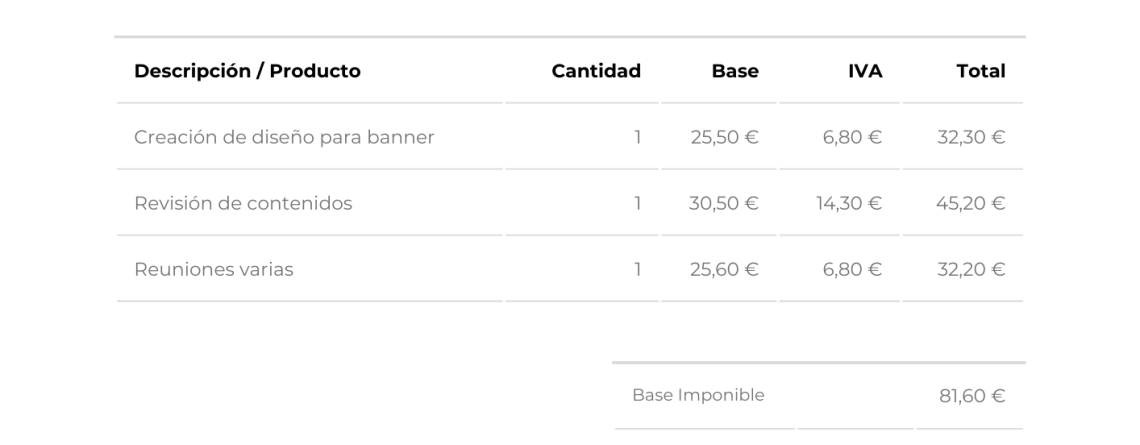Invoices at 7% or 15% withholding?
Patrick Gordinne Perez2022-11-28T17:06:58+00:00When issuing invoices to companies and other self-employed persons, the IRPF (Personal Income Tax) withholding tax of 15% must be applied. However, people who have registered as self-employed can benefit from a 7% withholding for the first two years, provided that a series of conditions are met.
What income is subject to withholding tax?
Income from self-employed professional activities is subject to withholding tax.
Also agricultural and forestry income and some income in objective estimation.
What is the reduced personal income tax withholding of 7%?
One of the concepts that should not be missing in any invoice is the IRPF withholding tax and when the client is another self-employed person or a company. The withholding is never applied when the invoice is to a private customer, nor when it is an intra-Community invoice.
As we have already mentioned above, the withholding that must be applied is 15%, which is the general IRPF, except in the following cases: poultry and pig fattening, at 1%, and forestry, agricultural and other livestock activities, at 2%.
Self-employed workers in the target system who are under heading 722 (Transport of goods by road) or 755 (Removal services) do not adhere to the general IRPF withholding, as they will apply a 1% withholding on their invoices.
However, self-employed workers who have registered for the first time during the year and for the following two full years will be subject to a 7% withholding tax.
It is important to bear in mind that it is not three full years but two full years and the time remaining until the end of the year when you register.
Requirements for applying the reduced withholding.
In order to be able to benefit from this rebate, the following requirements must be met:
– Not to have been registered as self-employed during the previous year.
– You must inform your clients that you are benefiting from the 7% withholding tax.
In order to effectively inform your clients that you are going to benefit from the 7%, you must indicate in the communication that you send them your identification details and the date on which you were registered in the activity, so that you can prove that you meet all the requirements.
It is important not to forget this because if this is not done, even if the clients have received the invoice with 7%, they are obliged to withhold 15%.
When is it in my interest to apply the reduced withholding tax?
It is important to note that the reduction of personal income tax withholding is not compulsory. In fact, it may not be worth it in all cases. In fact, if your income is high, it may not be advisable to take advantage of this deduction.
This 7% reduction is not the only advantage available to the newly self-employed. They also have the flat rate of 60 euros for the self-employed from the Social Security, which considerably reduces the contribution rate and makes it easier for new workers to start out as self-employed.
To find out if it is really worth it or not, the first thing you need to know is that this reduced IRPF is not a rebate but a reduction of the money you have to pay to the Treasury for your income. That is to say, with the 7% they withhold less in the invoice but afterwards, you will have to pay what corresponds to you.
In this sense, it is worthwhile for self-employed people who have just started working and who, as they do not have much income during these first steps, the 7% income tax withholding is more liquidity for them.
However, if you are earning a lot of money and you have only paid 7% in advance to the tax authorities, you will be surprised when it comes to paying taxes because, of course, having paid little money to the AET, when it comes time to file your income tax return, the payment will be much higher because you have paid little in advance.
In this sense, the personal income tax deduction is a great help to boost the activity of new entrepreneurs, but if your business is successful from the start it will not be necessary or advisable to make this reduction.




